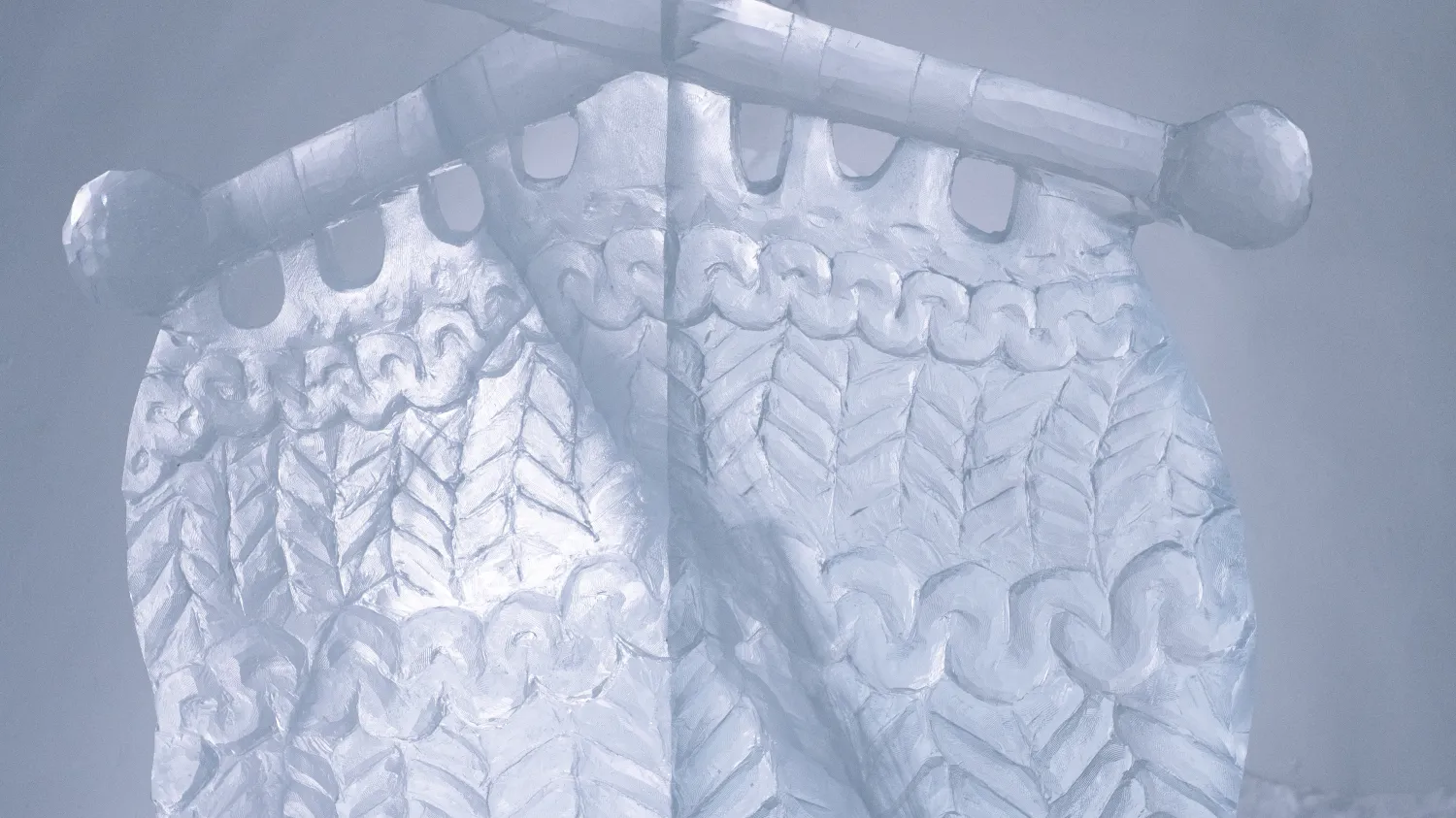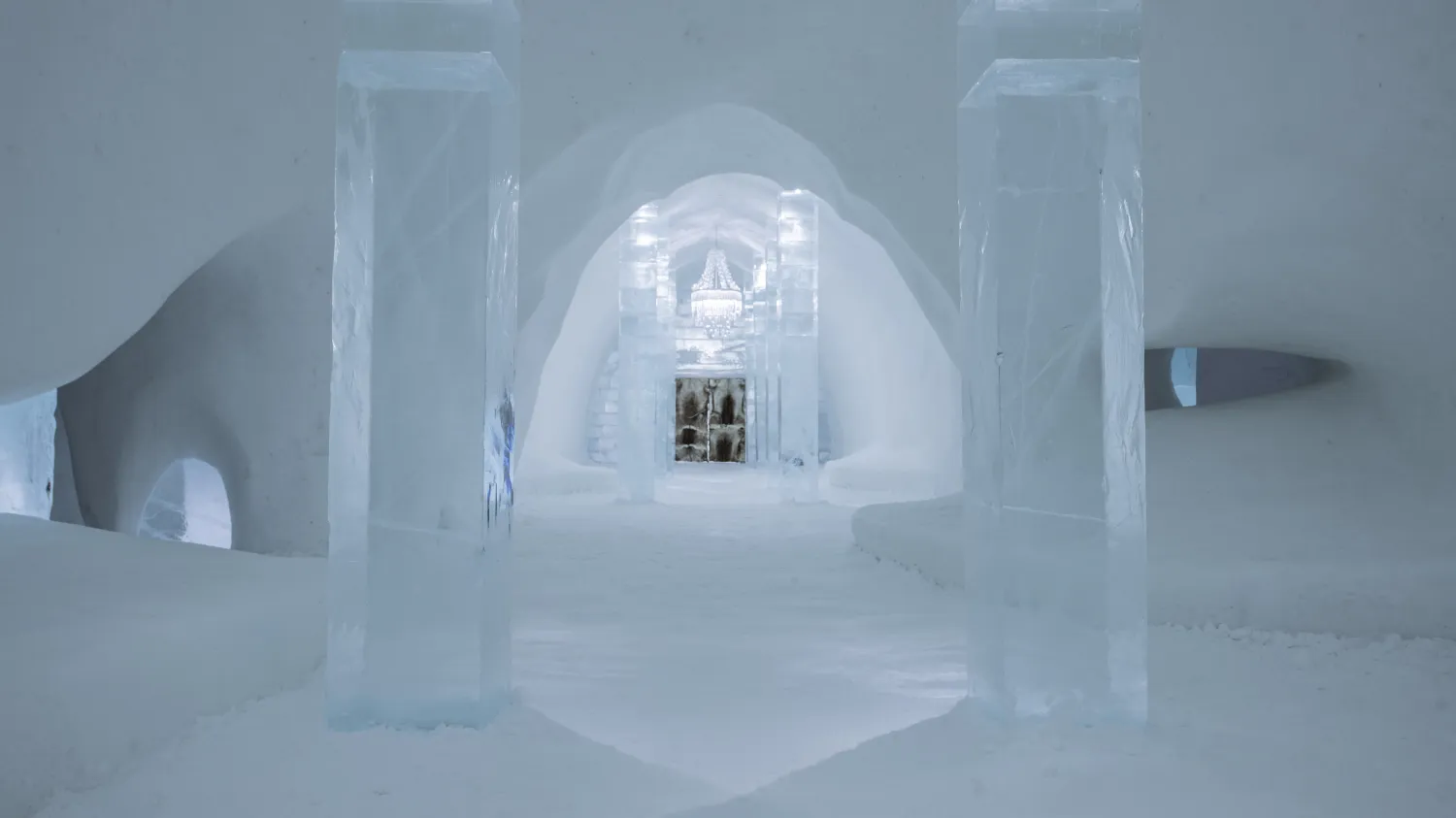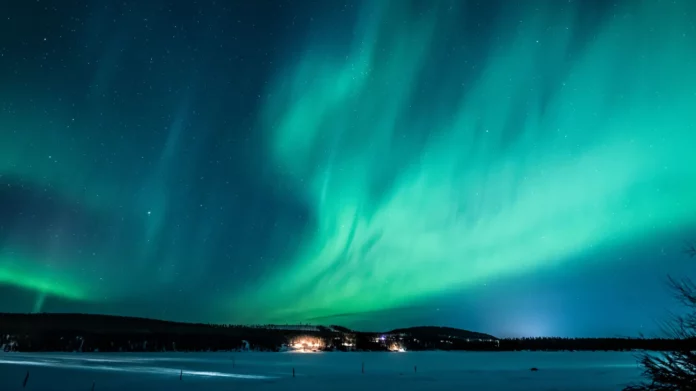Sleeping on ice in an arctic village bathed in the northern lights
Back in the mid-90s, my husband and I suffered some kind of brain-freeze and decided we would do something really, really different for our New Year holidays. Not just ordinary different, but crazy different!
We’ve all heard of some weird hotels like the Potato Hotel in Idaho, the Trojan Horse in Belgium, the Salt Hotel in Bolivia and the Robot Hotel in Japan. Well, our mad decision was to welcome in a New Year by viewing the aurora borealis and sleeping in an ice hotel.
Yes! Definitely a moment of madness.
One of the best places in the world to view the aurora borealis (the Northern Lights), the Midnight Sun and other natural phenomena, not least, the Polar Night, is Kiruna, in northernmost Sweden. It also boasts Kebnekaise — Sweden’s highest mountain and is home to the world’s largest underground iron-ore mine struck by an earthquake measuring 4.9 in 2020.
Kiruna is located in Swedish Lapland, about two hundred kilometers above the Arctic Circle — a vast wilderness with forests, lakes, and the Arctic tundra.
The best time to visit is during late December and mid-January. This is when Kiruna – and a few other places north of the Arctic Circle – are bathed in near-constant darkness. Even though the sun doesn’t rise above the horizon, it is never actually pitch black, thanks to the snow, the light from the moon and the “blue hour” — a few minutes of twilight each day when the sky takes on a deep blue hue.
It was quite an arduous journey back then just to get there. A flight from London to Stockholm and then a connecting flight to Kiruna. Sounds simple but, unfortunately, the weather had other plans. A snowstorm blew in, preventing our Kiruna flight from taking off, so we were stuck in Stockholm for another day. It’s not such a bad thing …Stockholm is a beautiful city.
We were able to continue to Kiruna the next day, and in 3 hours, we were on a bus heading to a village called Jukkasjärvi, where the Icehotel is located. The name Jukkasjärvi roughly translates as “meeting place by the water.”
The very first Icehotel was hand-sculpted in 1989 out of massive ice blocks harvested from the nearby Torne River, one of Sweden’s largest national rivers. The river that runs alongside the village provides the Icehotel with its ice in winter – and when Spring arrives, the ice parts of the hotel melt and the water returns to its source.
![Ice blocks are harvested from the River Borne and held in storage until the new Icehotel is built each year. [Photo courtesy of The Icehotel, Sweden]](https://www.hernandosun.com/wp-content/uploads/2025/01/iceblocks.jpg)
[Photo courtesy of The Icehotel, Sweden]
Natural ice requires a lot of work before it is harvested when it has grown its thickest. It takes months to maintain the “ice field” and keep it clear of snow so the ice can have the best possible conditions for growth.
The Icehotel opened for business in the village of Jukkasjärvi in 1990. It’s the world’s first ice hotel and has been redesigned and reconstructed every year since.
When we stayed at the hotel, the hotel boasted just a few ice bedrooms. Today it’s a 365-year-round, world-famous experience and something totally unique. Icehotel 365 accommodates twelve ice art suites, uniquely designed and hand-carved by selected artists, nine deluxe suites with private bathrooms, an ice gallery, an ice bar, an ice chapel, and an ice cinema.
Each winter, over sixty graphic designers, architects, industrial engineers and artists from all over the world converge on Jukkasjärvi, where they bring their unique ideas and blueprints to shape the new reincarnation of the hotel in snow, ice and light. Their creations are made with natural materials – mostly ice and snow, but also wood and magnetite. It’s ephemeral art – it exists for a limited period of time and then disappears or changes shape.
The hotel not only offers ice bedrooms but traditional heated hotel rooms and chalets as well. It’s recommended to book one night on ice and a couple in traditional hotel rooms or chalets, starting or ending with the night on ice to get the most out of your experience.
Before booking our stay at the hotel, we were warned not to underestimate the intense cold in the Arctic during winter and to carefully follow their clothing recommendations. Thermal underwear, thin wool socks and a hat are mandatory. We were told the secret is to wear layers that allow good ventilation of body heat materials that breathe and help avoid perspiration.
![Icehotel was the very first hotel of its kind in the world. Every winter since 1989, the Icehotel is reborn in a new guise with the creativity of hand-picked designers. [Photo courtesy of The Icehotel, Sweden]](https://www.hernandosun.com/wp-content/uploads/2025/01/icehotel-scaled.jpg)
[Photo courtesy of The Icehotel, Sweden]
Outdoor winter wear such as warm overalls, warm boots, balaclava and mittens are included when you stay at the hotel. Guests return them at the end of their stay. Your base layer or thermals, including long johns and a long-sleeved T-shirt, should ideally be made out of wool, but also remember to pack a warm hat, fleece sweaters, a scarf and plenty of warm wool socks.
The temperature in an ice bedroom stays at a constant minus five to minus seven Centigrade. Bloody cold! Guests get access to their ice bedroom at 6 p.m. but can escape to the heated service building at any time. It is staffed and open 24 hours. Knowing this kind of reassured us.
Before retiring to an ice bedroom, all guests are invited to attend a “survival course.” A guide tells us how to dress warmly and how to make the bed with the reindeer pelts and Arctic sleeping bags. The sleeping bags are issued to each guest and are made for temperatures as low as -25° C (-13° F). Fortunately, the temperature inside the hotel never drops below -5° C (23° F), so they are more than sufficient to keep guests warm.
Giovanni and I stayed one night only and it was a truly awesome experience. Our room was spectacular. It was like being in a snowflake fairytale. The bed, completely carved from ice, was a showstopper. There were crystalline carvings above the bed, a chandelier and side benches all made out of ice. The bed and the benches were draped in reindeer pelts. It was so unique.
And so we prepared to go to sleep. It was like being in a giant freezer. We snuggled into our sleeping bags, hats firmly pulled over our ears, and wished each other goodnight, hoping and praying we wouldn’t get cryogenically frozen.
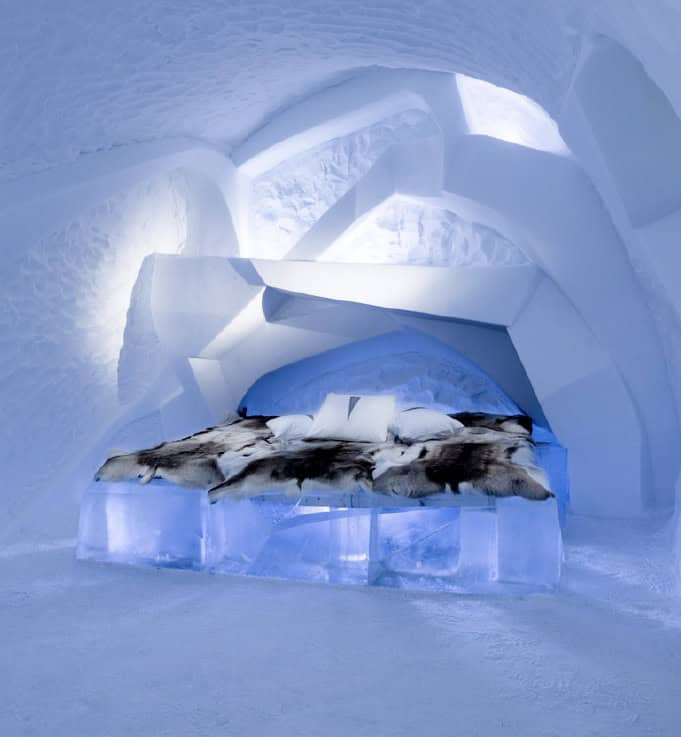
[Photo courtesy of The Icehotel, Sweden]
We discovered that the reindeer furs were wonderfully warm and soft, so we didn’t feel as if we were on ice at all. I will admit I didn’t get the best sleep possible but I’m glad I experienced it. Sleeping on an ice bed was “different,” but we were really here to see the aurora borealis.
Although we had viewed the Northern Lights at home in Scotland, the kaleidoscopic display in Kiruna was much more intense and totally unforgettable. It appeared as ghostly streamers waving and flickering among the stars. The colors were amazing – bright green, red, blue, yellow and purple. Then the shapes changed and seemed like curtains rippling and fluttering in a blaze of color and light. We gazed skywards in awe.
The northern lights are created when energized particles from the sun slam into Earth’s upper atmosphere at speeds of up to 45 million mph (72 million kph). Then, as the Earth’s magnetic field redirects the particles toward the poles, it transforms into a cinematic, atmospheric phenomenon that just dazzles and fascinates watchers.
For outdoor activities, the Icehotel offers the loan of warm outer clothing: snowsuit, boots, gloves and balaclava, which is included with your stay. Guests can return the clothing to the guide at the airport when you leave. There are lots of wilderness experiences that are completely free of electricity consumption, such as ice-sculpting, cross-country Nordic skiing, canoeing, snowmobile excursions, stand-up paddleboarding, and fishing. There’s also dog-sledding and reindeer racing.
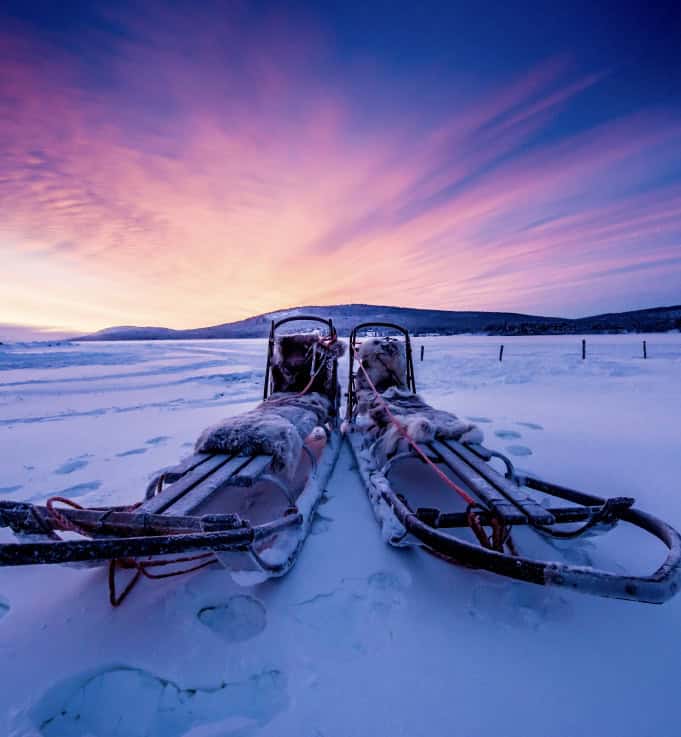
[Photo courtesy of The Icehotel, Sweden]
Kiruna’s culinary scene is influenced by Sámi food traditions. It’s the cuisine of people from the Sápmi territory, which spans Norway, Sweden, Finland and Russia. It’s based on local produce like fish, game, reindeer and berries.
Reindeer meat comes in many forms, including sausages and smoked steak, and you’ll also come across elk meat. Fish from local waters appear on many restaurant menus and you must try Kalix Caviar.
Kalix Caviar is the king of Swedish caviar. It’s expensive, though. This is because the roe has to be extracted by hand from the female vendace fish. It’s a highly skilled procedure. We sampled the caviar on crackers with some red onion and crème fraîche and a hefty shot of vodka. Delicious!
We also took a liking to Swedish lingonberries. They are small, tart, and slightly sweet red berries similar to cranberries in taste. They are delicious served on pancakes. Every guest is served hot lingonberry juice upon wakening after sleeping on an ice bed.
Our 1994 New Year ice sleeping experience was definitely a one-off. I’m not fond of cold weather which is why I stay in Florida. But for the brave amongst you, it could be your once-in-a-lifetime experience!
Sue Quigley writes regularly for the Hernando Sun. She can be reached at [email protected] or by telephone at 727.247.6308.
Aurora Borealis
• The aurora borealis, also known as the northern lights, is a natural light display in the sky caused by the interaction of the Earth’s magnetic field and charged particles from the sun.
• This natural light display is best seen in the dark northern skies of winter.
• The aurora can appear as curtains, rays, spirals, or flickers and can be pale green, pink, red, yellow, blue, or violet
• It’s mostly visible in the polar regions but can be seen over a larger area during major geomagnetic storms
